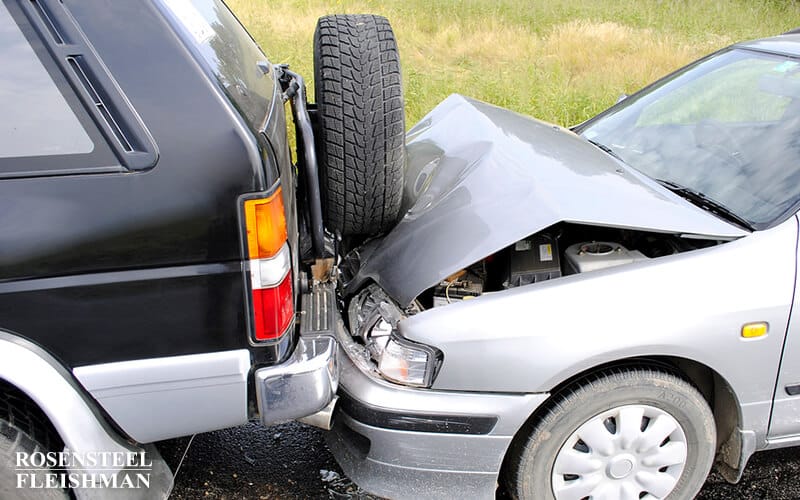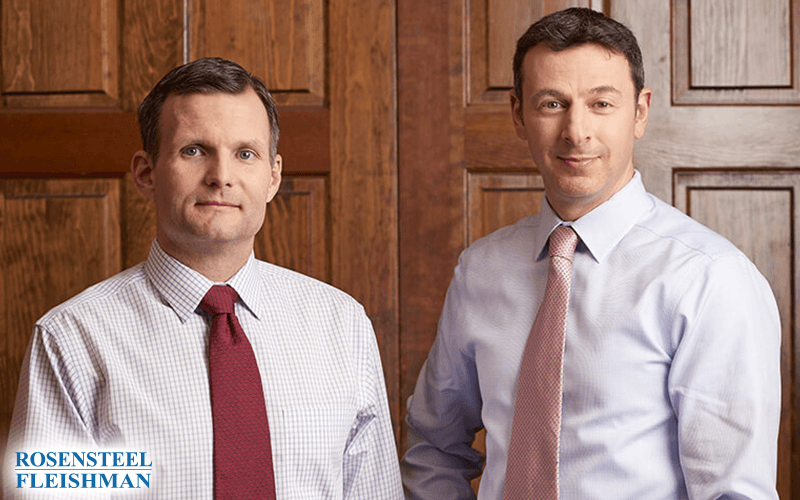It’s hard to describe the exact feeling after a car accident. One minute you’re driving along, and the next, your world is spinning—literally and emotionally. For many people, what comes after the crash is even more overwhelming. You're left dealing with pain, confusion, questions about fault, and pressure from insurance companies. It’s no surprise that […]

Peculiar Susceptibility in Car Accidents in North Carolina
A plaintiff’s claim in a car accident is based in the law of negligence. To successfully recover damages in a negligence claim, a plaintiff must be able to show that 1) the defendant had a duty to exercise reasonable care, 2) the defendant breached that duty, 3) the plaintiff suffered physical harm, 4) the defendant’s breach actually caused the plaintiff’s injuries, and 5) the defendant’s breach was a proximate cause of the plaintiff’s injuries. Proximate cause means that the injury was a natural and direct consequence of the defendant’s breach sufficient to make the defendant liable for the plaintiff’s injuries.
Sometimes, a plaintiff might have a pre-existing condition which would make him unusually susceptible to injury. In this case, North Carolina courts have held that a defendant owes such a plaintiff the duty of care owed to an ordinary person. If it was reasonably foreseeable that the defendant’s negligence would have injured an ordinary person, then the defendant is liable for the plaintiff’s injuries, even if the plaintiff’s injuries were more substantial than an ordinary person’s might be. The North Carolina Supreme Court stated in the 1968 case, Potts v. Howser that
The general rule is that where the result of the accident is to bring into activity a dormant or incipient disease, or one to which the injured person is predisposed, the defendant is liable for the entire damages which ensue, for it cannot be said that the development of the disease as a result of the injury was not the consequence which might naturally or ordinarily follow as a result of the injury, and therefore, the negligent person may be held liable therefor.
Therefore, “if defendant's misconduct 'amounted to a breach of duty to a person of ordinary susceptibility, he is liable for all damages suffered by plaintiff notwithstanding the fact that these damages were unusually extensive because of peculiar susceptibility.'”
However, if the defendant’s negligence instead aggravates a pre-existing condition, the defendant is liable for only the aggravation of the injuries. The North Carolina Supreme Court explained in Potts that
On the other hand, where the wrongful act does not cause a diseased condition but only aggravates and increases the severity of a condition existing at the time of the injury, the injured person may recover only for such increased or augmented sufferings as are the natural and proximate result of the wrongful act, or, as otherwise stated, where a preexisting disease is aggravated by the wrongful act of another person, the victim's recovery in damages is limited to the additional injury caused by the aggravation over and above the consequences, which the pre-existing disease, running its normal course, would itself have caused if there had been no aggravation by the wrongful injury.
Typically, the issue of proximate cause is a factually based one which is best decided by the jury. North Carolina pattern jury instructions relating to the issue of proximate cause and peculiar susceptibility are found in N.C.P.I. MV 102.20 Proximate Cause - Peculiar Susceptibility, and state as follows:
In deciding whether the [injury to the plaintiff] [death of the decedent] was a reasonably foreseeable consequence of the defendant's negligence, you must determine whether such negligent conduct, under the same or similar circumstances, could reasonably have been expected to [injure] [cause the death of] a person of ordinary [physical] [mental] condition. If so, the harmful consequences resulting from the defendant's negligence would be reasonably foreseeable and, therefore, would be a proximate cause of the [plaintiff's injury] [decedent's death]. If not, the harmful consequences resulting from the defendant's negligence would not be reasonably foreseeable and, therefore, would not be a proximate cause of the [plaintiff's injury] [decedent's death].
(Furthermore, even if a person of ordinary [physical] [mental] condition would not be reasonably expected to [be injured] [die], you must determine whether the defendant had knowledge or a reason to know of the plaintiff's peculiar or abnormal [physical] [mental] condition. If so, the harmful consequences resulting from the defendant's negligence would be reasonably foreseeable and, therefore, would be a proximate cause of the [plaintiff's injury] [decedent's death]. If not, the harmful consequences resulting from the defendant's negligence would not be reasonably foreseeable and, therefore, would not be a proximate cause of the [plaintiff's injury] [decedent's death].)
Under such circumstance(s), the defendant would be liable for all the harmful consequences which occur, even though these harmful consequences may be unusually extensive because of the peculiar or abnormal [physical] [mental] condition which [happens] [happened] to be present in the [plaintiff] [decedent].
Now let’s look at a few cases where the North Carolina Court of Appeals has applied this law to specific facts. In Holtman v. Reese (1995), the plaintiff was involved in a car accident in a parking lot, at which time defendant was travelling approximately 2 mph. The plaintiff had been involved in three previous car accidents in the past 8 years and had been to see a chiropractor over 100 times to treat injuries from these accidents. At trial, the jury, instructed per the pattern jury instructions, found that the defendant’s negligence had not proximately caused the plaintiff’s injuries. The plaintiff’s chiropractor “testified that these previous injuries were permanent, that soft tissue injuries in the neck "can never be returned to their original state after injury," that plaintiff was "susceptible" to neck pain and injuries because of her pre-existing neck injuries, and that her pre-existing neck problems were a "contributing factor" in the problems she had after the most recent accident.” The court of appeals held that
a defendant whose negligent act would not have resulted in any injury to an ordinary person will not be liable for its consequences to one of peculiar susceptibility. As for aggravation, our case law indicates that where a pre-existing mental or physical condition is aggravated or enhanced by a defendant's negligence, the defendant is liable only to the extent that the underlying condition is enhanced and not for damages attributable to the original condition.
Therefore, the jury’s verdict was supported by sufficient evidence.
In Taylor v. Ellerby (2001), the plaintiff was involved in a car accident in February 1995, immediately after which she complained of back pain. A few days later, she went to the doctor and complained of neck and back pain. She continued to visit the doctor several times. It was not until her sixth visit (21 days after the accident) that she complained of knee pain. The doctor who performed her knee surgery testified that there was evidence of fresh injury to the knee, as well as pre-existing damage. The jury found that the plaintiff was not injured as a result of the defendant’s negligence, and the court of appeals held that there was sufficient evidence to support this verdict.
Finally, in Carrington v. Depaoli (2012), the accident at issue occurred in April 2008. Following the 2008 accident, the plaintiff suffered back and leg injuries. The plaintiff had been involved in a prior accident in September 2002, after which he also experienced back and leg pain. The plaintiff “testified that he fully recovered from that collision by September 2002 and participated in several physical activities including running, tennis, and softball, symptom-free, in the approximately six years between recovery and the 2008 accident.” However, the plaintiff’s doctor’s testimony “tended to show that [the plaintiff] had certain preexisting back conditions at the time of the accident at issue.” The jury found that the defendant’s negligence was not a proximate cause of the plaintiff’s injuries. The defendant argued that it was error to provide a jury instruction on peculiar susceptibility. The court of appeals held that “[a] trial court's instruction on the issue of peculiar susceptibility is not erroneous if the evidence, when viewed in the light most favorable to the proponent, supports a reasonable inference of the existence of peculiar susceptibility” and that a “jury instruction on peculiar susceptibility is warranted where a pre-existing condition aggravates an injury suffered by the plaintiff.”
If you have been injured in a car accident, contact an attorney at Rosensteel Fleishman Car Accident & Injury Lawyers (704) 714-1450, to discuss your options.
Additional Car Accident Articles
Being involved in a car accident can shake up your entire day, if not your entire month. Whether it’s a minor fender bender or something more serious, dealing with the aftermath often feels like stepping into a world full of confusion. One minute you're heading to work, the next you're standing beside a damaged car, […]
Getting rear-ended in traffic or jolted during a sudden stop is more than just a frustrating inconvenience. For many Charlotte drivers, what follows isn’t always visible. Whiplash is one of the most common injuries that people experience after a car accident, and yet it’s often misunderstood or overlooked. The pain might start off mild or […]
After a serious car accident, it's normal to feel overwhelmed. Between dealing with injuries, lost time from work, and the endless calls from insurance companies, most people aren’t sure what their next step should be. The physical pain is hard enough, but the uncertainty of what comes next only adds to the stress. You’re likely […]
